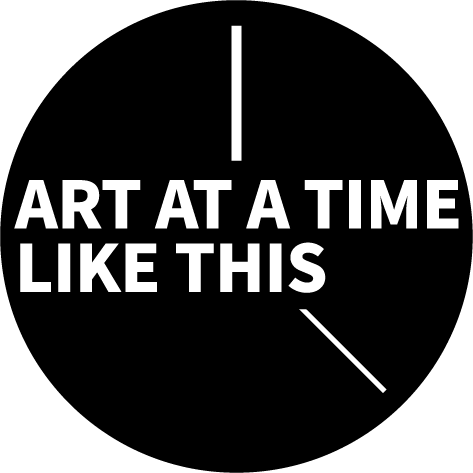
Miwako Tezuka
From the streets of Shibuya at night to the post-311 no-entry zone in Fukushima, the art collective Chim↑Pom thrive in spaces that are almost otherworldly and constantly mutating. Their work from 2006 Super Rat that put on pedestal, literally, taxidermy rats colored and posed just like Pikachu critically looked at urban ecology in Tokyo. In 2016 their exhibition entitled “So see you again tomorrow, too?” used an entire building deemed for demolition in Kabukicho in Tokyo and shed light on encroaching cleansing of this entertainment area in the name of redevelopment in preparation for the Olympic Games, then scheduled for 2020. Due to the pandemic, the entire city is now an extraordinary space for Chim↑Pom to draw inspiration from. Their most recent project May, 2020, Tokyo is a series of outdoor signs that mark the existence of something—people, or perhaps the city itself—as well as something that still feels to be in a precariously promised state of existence—the 2021 Olympics and all its aspirational goals.
Chim↑Pom
In 2020, the world faces an unprecedented crisis due to the spread of COVID-19. Large cities underwent lockdowns, online systems accelerated, and Tokyo declared a state of emergency for April and May. The virus, in an instant, changed our way of life and our values.
The Tokyo Olympics and Paralympics, intended to be epic celebrations, have now been postponed to 2021. With this, Tokyo 2020, the brand name that the city proudly proclaims, will be repurposed for 2021.
Despite the odds, in this project, Chim↑Pom continues to produce work outdoors. The collective focuses again on the city, where officials urge people to self-refrain from going out by novel assertions of “stay home” and “social distance.”
In a city devoid of many of its functions, what does the outside world under a state of emergency look like? What changes, and what remains the same?
To record this, Chim↑Pom installed billboards painted with cyanotype sensitizer in various locations where traffic dramatically decreased. They left these signboards out for two weeks, printing traces of the unchanged environment—rain, sunlight, wavering shadows—onto the screen, marking the passing of time.
How will society shift after 2021, and how will that affect interpretations of this work? Evoking the various projections of Tokyo 2020 that Japan has and will continue to envision, and the term “new normal” that emerged with corona, this work attempts to draw the “blueprint” for 2020—a year of visions appearing and disappearing—as a billboard.
May, 2020, Tokyo (Ningen Restaurant)
Courtesy of the artist and ANOMALY.
May, 2020, Tokyo (Shinjuku White House)
Courtesy of the artist and ANOMALY.
Photo: Kenji Morita
May, 2020, Tokyo
Courtesy of the artist and ANOMALY.
Photo: Kenji Morita
May, 2020, Tokyo
Courtesy of the artist and ANOMALY.
Photo: Kenji Morita
May, 2020, Tokyo
Courtesy of the artist and ANOMALY.
May, 2020, Tokyo (Okubo Station)
Courtesy of the artist and ANOMALY.






